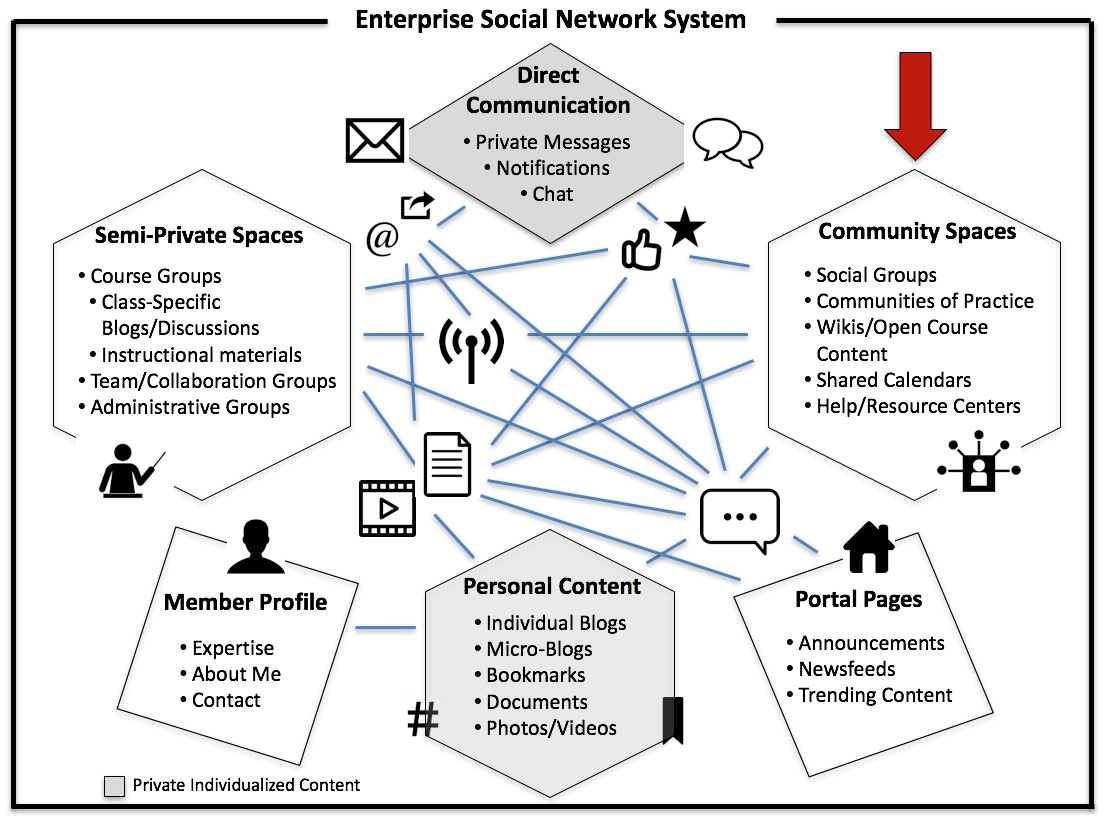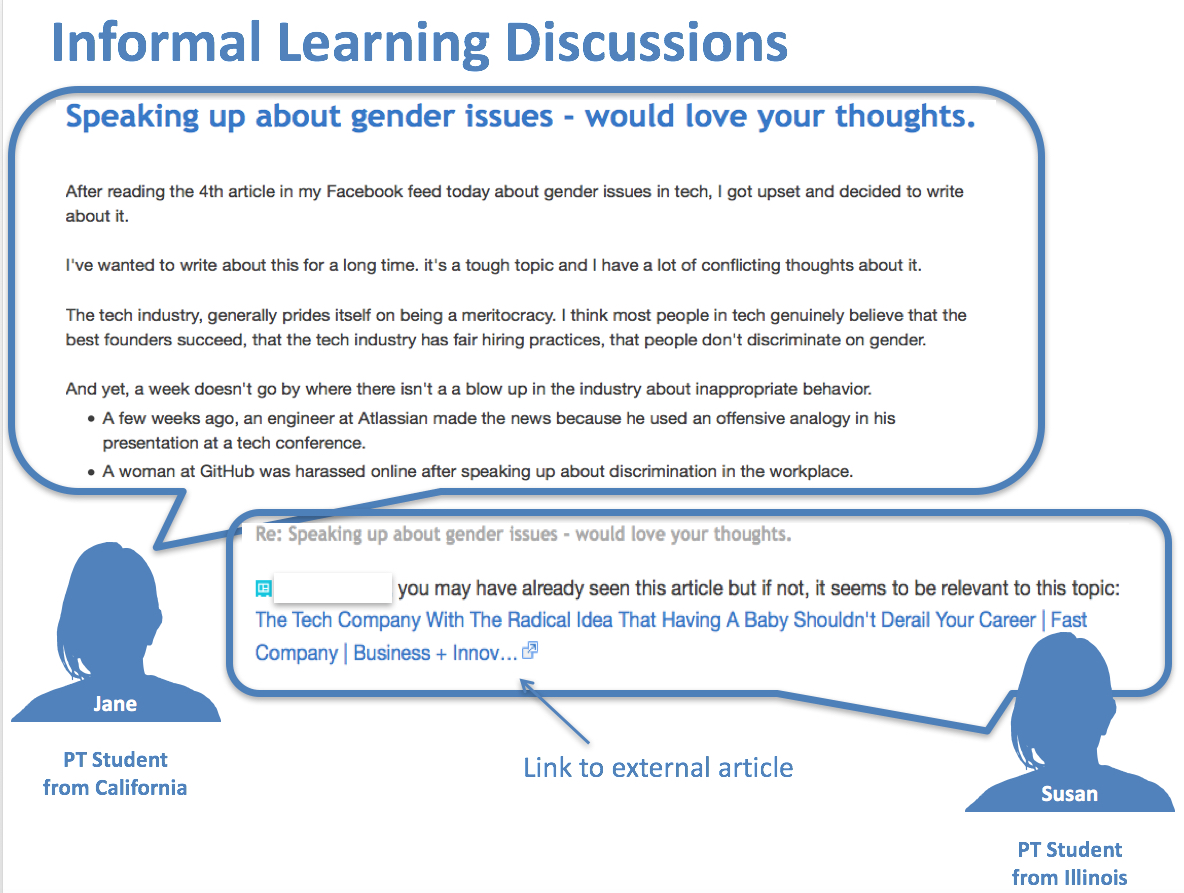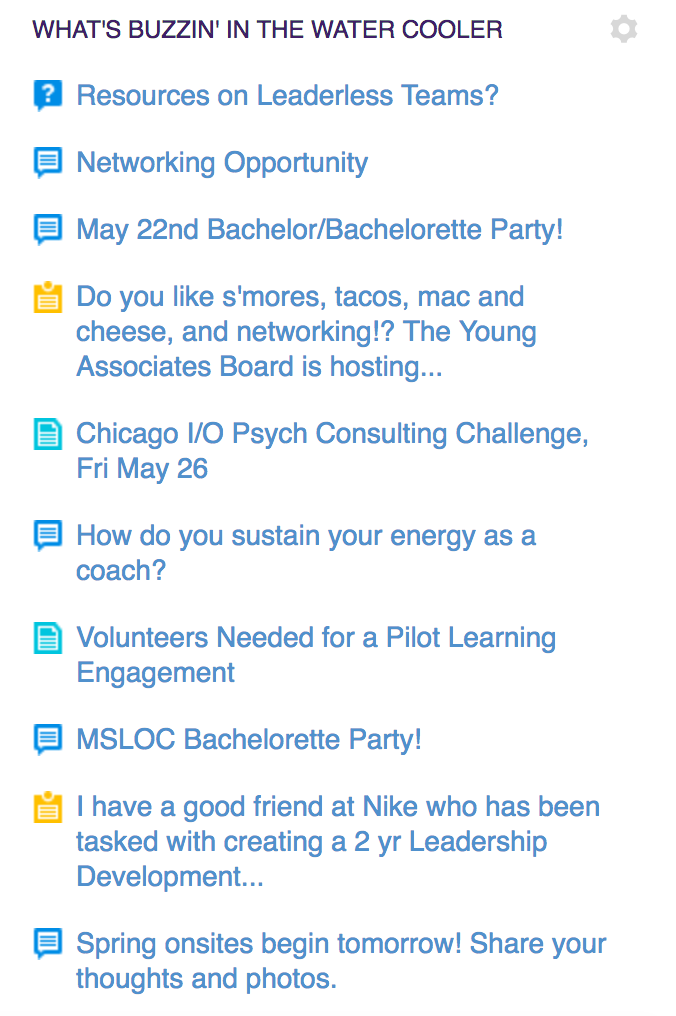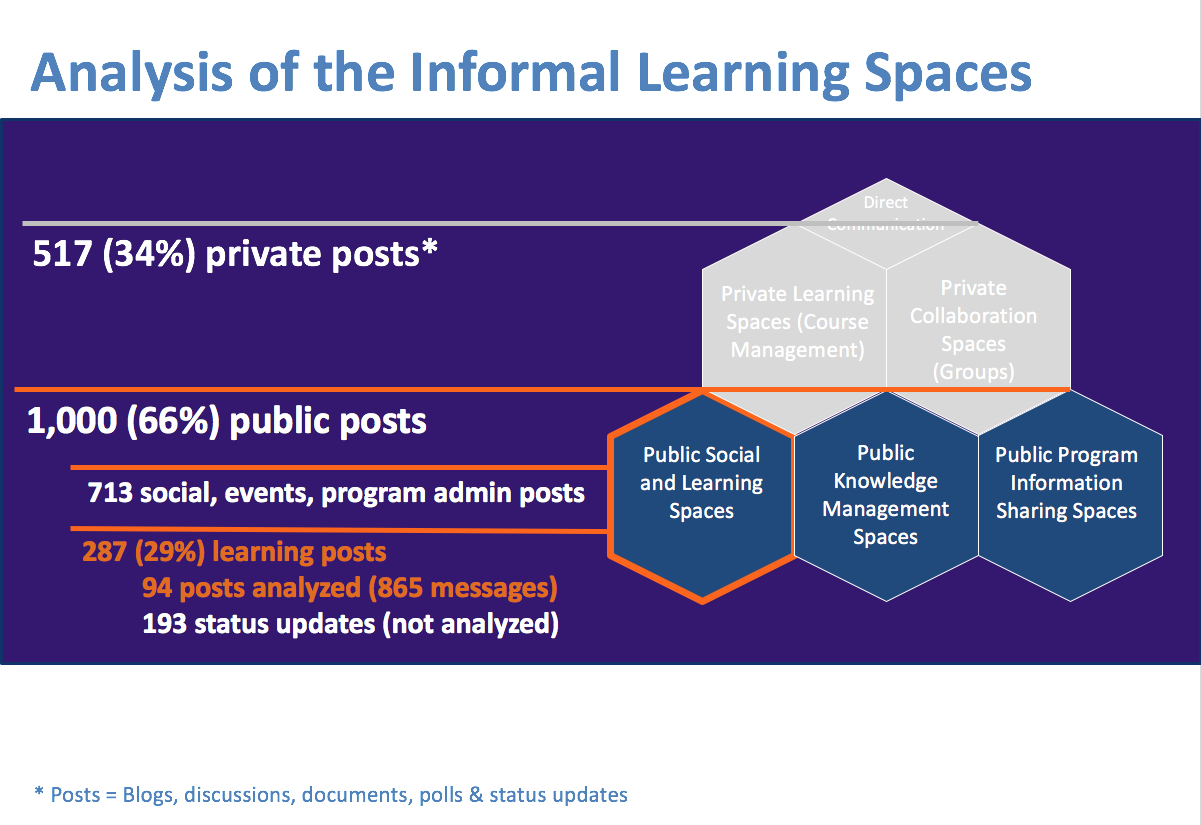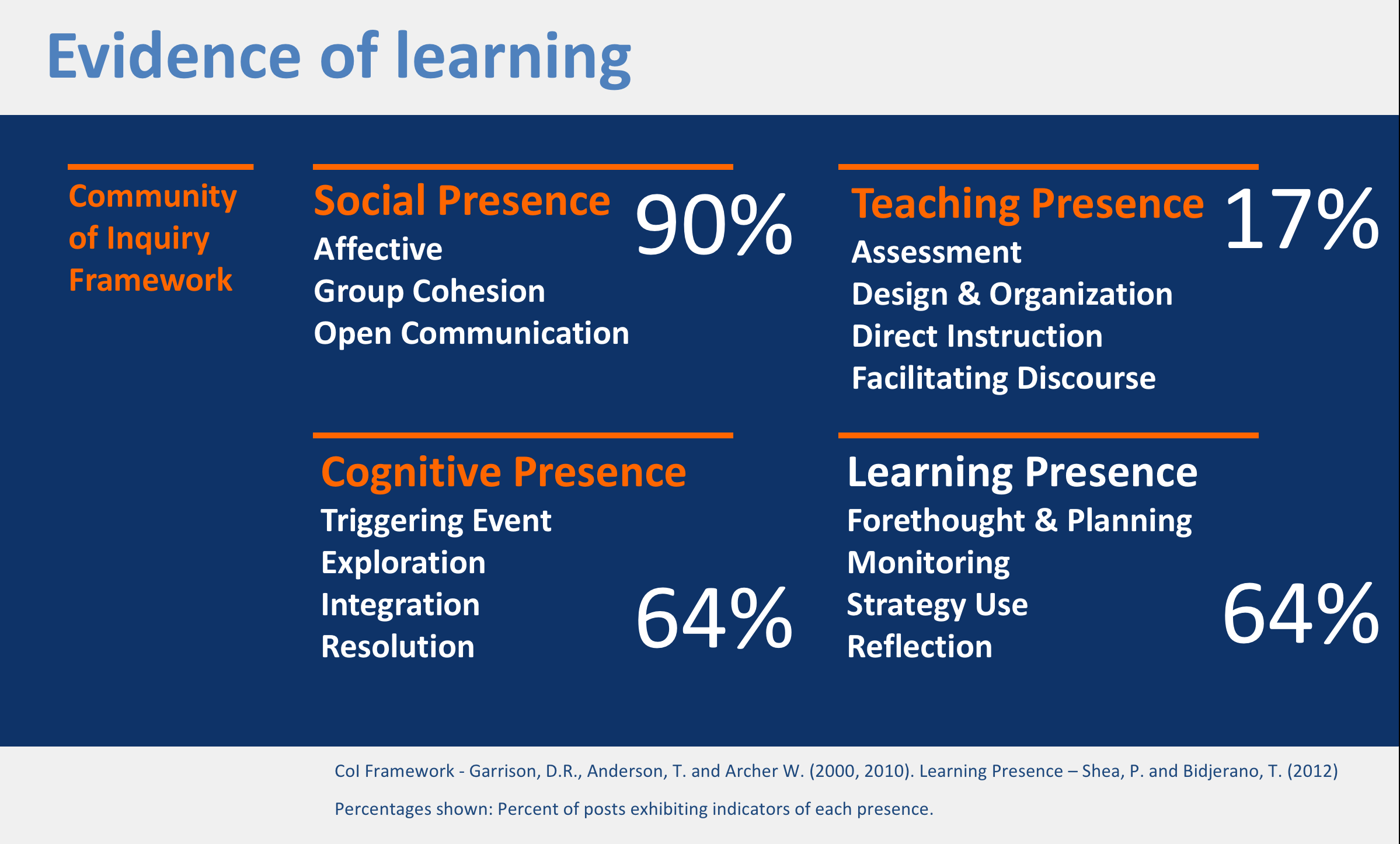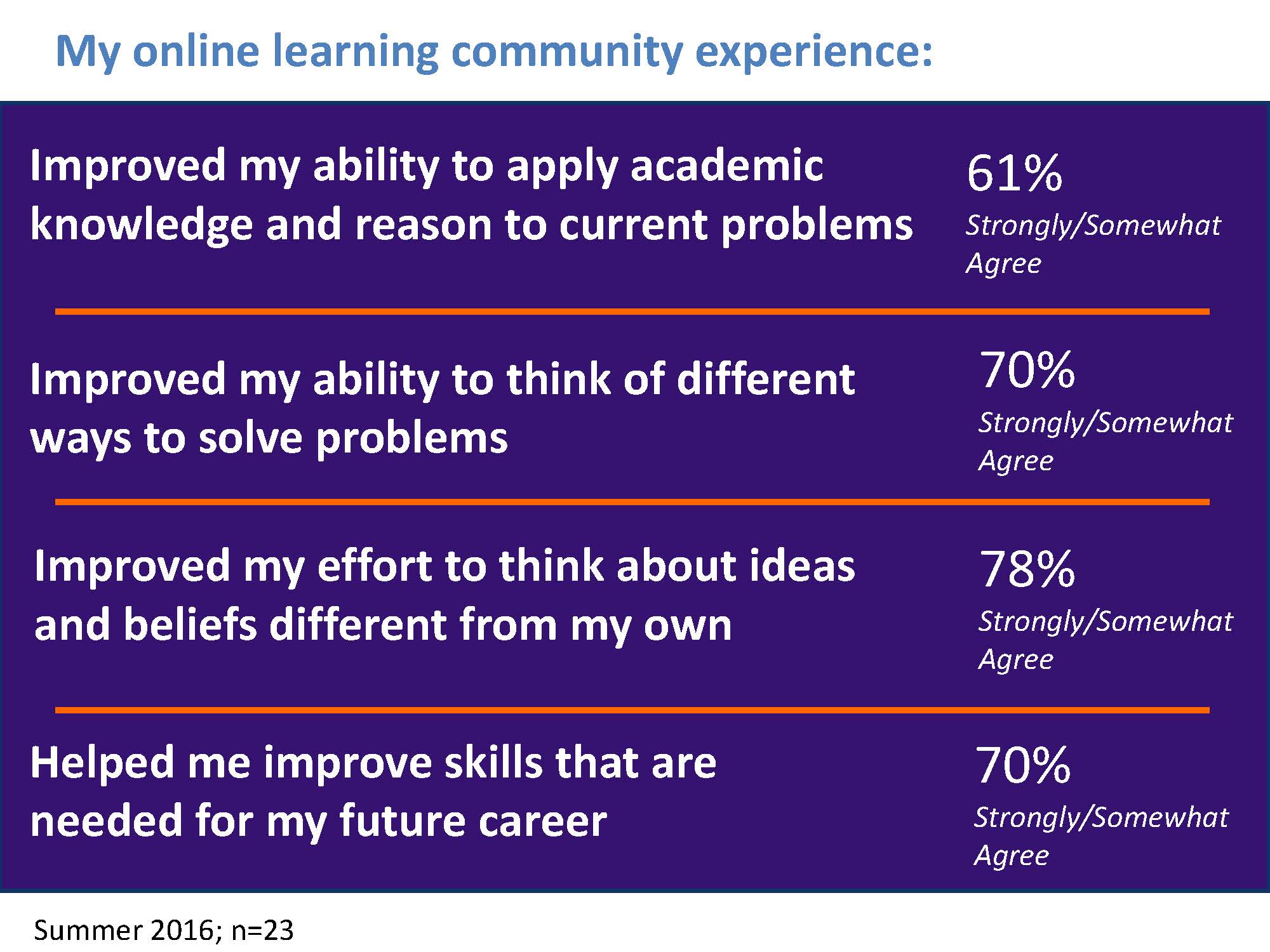WE’RE TALKING ABOUT DIGITAL WATER COOLER CONVERSATIONS
What are those?
“These informal learning spaces – parts of the system to which all community members have free and open access – are analogous to the bricks-and-mortar example of corridors and dining halls, where interactions can range from small talk to dialogue.”
WHAT DOES AN ENTERPRISE SOCIAL NETWORK SYSTEM LOOK LIKE?
One-minute HIVE tour:
Three-minute HIVE tour with narration:
WHAT’S THERE TO LEARN ABOUT?
This session is focused on informal learning—those learning opportunities that can happen within a program of study but outside of the formal classroom.
- How students use these online community spaces for discussion and learning
- Is there evidence of learning?
- Is there evidence of impact?
- How to create a learning ecosystem for your program of study that encompasses online informal learning spaces
WHAT KINDS OF DISCUSSIONS TAKE PLACE IN THESE SPACES?
TYPICAL CONVERSATIONS
Activity in this space reveals the blurred lines between personal, professional, and academic, typical of the conversations you might expect to hear in corridors or dining halls.
IS THERE EVIDENCE OF LEARNING?
Full Article: Scott, K.S., Sorokti, K. H., & Merrell, J. D. (2016) Learning “beyond the classroom” within an enterprise social network system.” The Internet and Higher Education, 29, 75-90.
http://www.sciencedirect.com.turing.library.northwestern.edu/science/article/pii/S1096751615300117
IS THERE EVIDENCE OF IMPACT?
Results from online survey research conducted by Amy Pilcher, Ph.D. candidate from Iowa State University.
HOW MIGHT WE FACILITATE LEARNING VIA INFORMAL, DIGITAL SPACES USING OTHER ONLINE PLATFORMS?
Not to oversimplify the design and planning required, here are a few top-line recommendations:
- Consider your program’s culture and overall learning objectives
- Is there a clear domain of knowledge and practice around which your community can form?
- Do you have clarity of intent–what are you trying to accomplish?
- Culture…let’s discuss!
- Envision the types of online interactions you would like to see that will accomplish your objectives:
- Question and answer?
- Dialogue?
- Resource sharing?
- Storytelling and commentary?
- Working out loud?
- Collaborative content creation?
- Decide what type of technology/spaces will afford these interactions
- Keep it as simple as possible
- Try to use technology that will be familiar to users–from academic or (ideally) “real world” contexts
- Plan how to support this space — Online communities don’t manage themselves!
- What will be the roles of faculty and staff?
- How much “teaching presence” can we afford?

